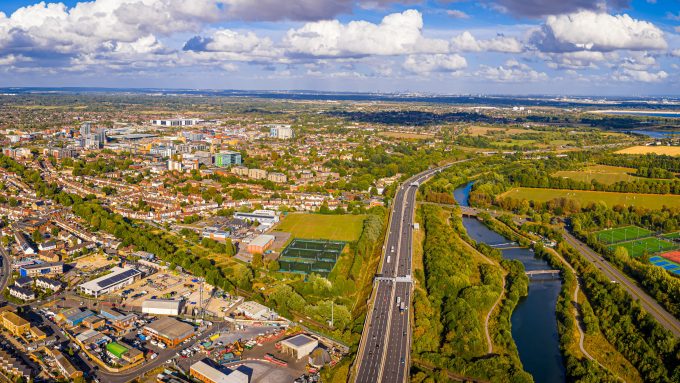
Sekforde Street office becomes testbed for pioneering air quality sensors

Visitors to Connected Places Catapult’s Sekforde Street office: look up! Five smart sensors have been installed around the building to monitor indoor air pressure, humidity and temperature as well as levels of carbon dioxide and gases known as volatile organic compounds.
Data is being transmitted to a web-based dashboard via little white router hubs on the wall featuring black antennas. The aim is to better understand what can be done to create a more comfortable, healthy and productive working environment for employees and visitors.
The equipment has been installed by Cascoda, an SME specialising in Internet of Things (IoT) technology, and represents the first time a so-called KNX IoT environment sensor has been trialled independently anywhere in the world. Unlike most IoT standards, KNX IoT can be used with existing wired installations, so no new training is needed to integrate the new technology.
The wireless hardware is battery operated and has been installed without having to drill holes in the wall to run wires. The aim of the technology is to enable existing building management systems to improve the energy efficiency and air quality of our buildings, by adding the required environment and occupancy sensing.
Accurately monitoring indoor conditions
“If we want our buildings to be more energy efficient, it is very important to be able to accurately monitor indoor conditions. A building’s temperature may be regulated, but if you suddenly have 40 people enter a room the temperature will shoot up and the air conditioning kicks in, but will often over-compensate.”Cascoda chief executive, Bruno Johnson
Bruno explains that air conditioning systems are often set at a low temperature, even if there is no-one in a room. By monitoring a room’s occupancy, policies can be put in place to have the units set to a slightly higher temperature when a room is unoccupied. Further afield, AI could be used to predict when an indoor space is likely to be occupied, and prepare the conditions – including lighting levels – accordingly.
Preventing unnecessary spending on energy is another aim. “A study of commercial buildings in central London during the pandemic found that despite buildings being almost empty in March 2020, they still used 86% of their normal energy consumption,” Bruno adds.

The installation at Connected Places Catapult is described as ‘passive’ and is a testbed for gathering data on the reliability of the communications, and the effectiveness of the monitoring. The equipment is set to be in situ for at least three months.
“It was a very simple install because everything is wireless,” says Bruno. “This is a really powerful advantage from the point of view of the installer community.”
Introduction to the Catapult
Cascoda was invited to install its systems at the Sekforde Street office after meeting representatives from the Catapult at an Innovate UK event in Singapore.
Bruno describes the Catapult office as being “rather challenging” from a radio frequency perspective; its brick walls are very thick and it features solid concrete floors.
“But this is actually a good thing for us because we want to know how our technology performs in such a building.” Bruno adds that the high ceilings in the Catapult building mean that there is less chance of air quality issues, which can be more of an issue in more modern offices.
It is too early to know what savings could be achieved by monitoring indoor air quality in this way, he adds. But a 20% reduction in carbon and energy costs is, Bruno says, possible.





